Jonathan L. Ready
The Homeric Wild Papyri and Scribal Performance
Mánudaginn 16. júní 2025 kl. 15.00 / Monday, June 16, 2025, at 15.00
Fyrirlestrasal Eddu (E-103) / Edda auditorium (E-103)
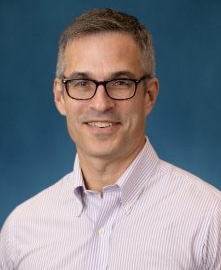
The scribal act of copying an exemplar needs to be understood as a performance. Building on linguistic anthropology’s study of oral performers, my contribution resides in explaining what scribal performance entails. I use the Hellenistic-era wild papyri of the Homeric epics to show how scribal performance involves (1) entextualizing; (2) aiming for completeness; (3) enhancing a text’s affective power; (4) operating as a tradent as well as traditionalizing; (5) negotiating an intertextual gap; (6) fashioning a bookroll; and (7) adopting a stance toward one’s work.
Jonathan L. Ready is a professor of classical studies at the University of Michigan. His most recent monograph is titled Immersion, Identification, and the Iliad (Oxford 2023). His current book project has the working title Euripides’s Orestes and Post-Critique.
Fyrirlesturinn verður haldinn á ensku og er öllum opinn. / The talk will be delivered in English and is open to all.
—o—o—o—
Gareth Lloyd Evans, Brynja Þorgeirsdóttir, Carolyne Larrington et al.
Saga Emotions
A Joint Lecture on Feelings in Old Norse Literature
Fimmtudaginn 12. júní 2025 kl. 16.00 / Thursday, June 12, 2025, at 16.00
Oddi 101
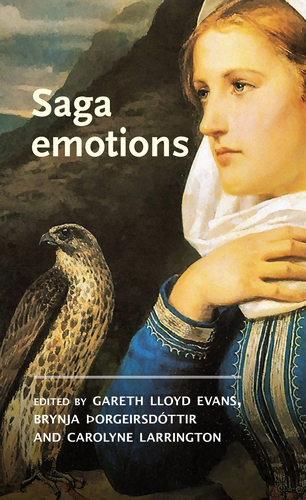 How were emotions expressed in Old Norse literary texts? How can we trace the feelings of the past in sagas written centuries ago? This joint lecture explores these questions and more, marking the launch of Saga Emotions, a new academic volume that challenges and enriches our understanding of emotion in Old Norse literature.
How were emotions expressed in Old Norse literary texts? How can we trace the feelings of the past in sagas written centuries ago? This joint lecture explores these questions and more, marking the launch of Saga Emotions, a new academic volume that challenges and enriches our understanding of emotion in Old Norse literature.
The book investigates how emotions are represented in Old Norse literary texts, laying a particular emphasis on those genres which are regarded as quasi-historical or naturalistic. It engages with a broad range of individual emotions through close lexical examination and analysis of case-studies across a range of saga genres. The fundamentally lexemic approach is intended to grapple with the methodological issues raised by using modern emotion terms to interpret medieval texts, which risks forcing the material into preconceived and possibly anachronistic categories. In taking this approach, and by ranging beyond the better-known Íslendingasögur (sagas of Icelanders) also to consider samtíðarsögur (contemporary sagas), konungasögur (kings’ sagas), and biskupasögur (sagas of bishops) alongside other religious texts, the book reconfigures the field of emotion study in Old Norse literature. Saga Emotions is the first book to take this kind of systematic approach to Old Norse prose literature. As each chapter takes its cue from a particular Old Norse word or set of words with demonstrable emotional connotations, the book aims to bring rigour to, and to interrogate, the assumptions with which modern readers analyse these often profoundly strange medieval texts. The aim is to alert readers to emotion that is implicit or understated, and to warn against imposing modern and anglophone taxonomies on literary works that originate in a very different textual culture and social milieu.
The lecture begins with a keynote by editor Carolyne Larrington, University of Oxford, outlining the book’s main findings and approaches. This is followed by brief “lightning talks” from contributors, each showcasing key insights into how emotions like anger, grief, love, and joy appear in the medieval saga world.
- Secular love – Sif Rikhardsdottir, University of Iceland
- Going berserk and the killing mood – Gareth Lloyd Evans, University of Oxford
- Sadness – Edel Maria Porter, University of Castilla-La Mancha
- Compassion – Ásdís Egilsdóttir, University of Iceland
- Desire – Alexander Wilson, University of Leicester
- Grief – Kristen Mills, University of Oslo
- Disgust – Rebecca Merkelbach, University of Tübingen
- Pride – Katherine Olley, University of Nottingham
- Anger – George Manning, University of Oxford
- Shame – Brynja Þorgeirsdóttir, University of Iceland
The event will conclude with an open discussion, offering the audience a chance to engage with the speakers and reflect on the relevance of medieval emotional worlds to our own.
The editors of Saga emotions are:
- Gareth Lloyd Evans, Associate Professor of Old Norse at the University of Oxford.
- Brynja Þorgeirsdóttir, Assistant Professor of Icelandic Literature at the University of Iceland.
- Carolyne Larrington, Emeritus Professor of Medieval European Literature at the University of Oxford.
Fyrirlestrarnir verða haldnir á ensku og eru öllum opnir. / The talks will be delivered in English and are open to all.
—o—o—o—
Alban Gautier
‘Righteous heathens’ before the age of sagas: did something change in the early twelfth century?
Miðvikudaginn 11. júní 2025 kl. 15.00 / Wednesday, June 11, 2025, at 15.00
Árnagarður 304

The notion of the ‘righteous heathen’ or ‘good pagan’ is well-known from Icelandic sagas. There abundance in North European written narratives about the pre-Christian past seems to start sometime in the first half of the twelfth century, when so-called ‘national historians’ such as ‘Gallus Anonymus’ in Poland, Cosmas of Prague in Bohemia or Geoffrey of Monmouth in Britain tell long stories about rulers from the pagan past, celebrating their virtues and their achievements. I will show that, before this date, such stories were not inexistant in the North, but were limited to some regions (especially Ireland) and to a few notable individuals (a handful of them being even regarded as possibly admitted to Paradise). So did something change in the early twelfh century, that made such stories more acceptable for writers that were no less Christian and no less clerical than their predecessors?
Alban Gautier is professor of medieval history at Université de Caen Normandie. His research focuses on Norse culture of the Viking Age where he has researched the roots of the concept of the “noble heathen” which appears in medieval Icelandic literature. In his book Beowulf au paradis: Figures de bons païens dans l’Europe du Nord au haut Moyen-Âge (Éditions de la Sorbonne, 2017), Gautier traces the origins of this concept to the writings of medieval theologians and offers a new interpretation of Beowulf.
Fyrirlesturinn verður haldinn á ensku og er öllum opinn. / The talk will be delivered in English and is open to all.
—o—o—o—
Alban Gautier
The ‘Massacre of the Long Knives’: transformations of a narrative from the ninth to the thirteenth century
Miðvikudaginn 11. júní 2025 kl. 11.00 / Wednesday, June 11, 2025, at 11.00
Árnagarður 304

A story first appearing in the Historia Brittonum traditionally ascribed to Nennius (early ninth century) tells how, after the Saxons led by Hengest first arrived in Britain, they invited all British noblemen to meet them: in the course of the meeting, the Saxons drew their knives and each one killed his neighbour. I will retrace the transformation of this narrative over five centuries, showing how it was retold and modified in history, pseudo-history and romance, and in a variety of European languages. The most important turning point here was undoubtedly Geoffrey of Monmouth and his History of the Kings of Britain: after him, nearly all versions, from Wace’s Roman de Brut to Breta sögur, drew some inspiration from his version, still modifying it, adding or removing individual details.
Alban Gautier is professor of medieval history at Université de Caen Normandie. His research focuses on Norse culture of the Viking Age where he has researched the roots of the concept of the “noble heathen” which appears in medieval Icelandic literature. In his book Beowulf au paradis: Figures de bons païens dans l’Europe du Nord au haut Moyen-Âge (Éditions de la Sorbonne, 2017), Gautier traces the origins of this concept to the writings of medieval theologians and offers a new interpretation of Beowulf.
Fyrirlesturinn verður haldinn á ensku og er öllum opinn. / The talk will be delivered in English and is open to all.
—o—o—o—
Declan Taggart
“Tired of a warm boudoir and gloves filled with down”
The construction of Viking Age warrior identity
Þriðjudaginn 8. apríl 2025 kl. 16.30 / Tuesday, April 8, 2025, at 16.30
Fyrirlestrasal Eddu (E-103) / Edda auditorium (E-103)
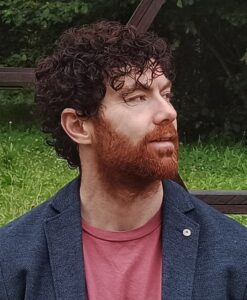
Warriors remain a cultural staple across the globe, from kids playing with fingers for guns to the blood and guts of Gladiator and videogames like Elden Ring. That does not mean, however, that warrior identity is a straightforward topic for scholars, and this is as true for the Viking Age as for any other period in history. To put it simply, while many people can fight, not everyone who fights is a warrior. No word in Old Norse can even be said to unambiguously equate to the concept, although there are several that we can associate with it.
What, then, is a Viking Age warrior? The goal of this paper is to determine and elucidate that identity, exploring how it was constructed, maintained and propagated, and examining how it was perceived by and affected others in society, a dimension of warriorhood that is rarely considered. To do so, I turn to the archaeological, iconographic and textual sources of Scandinavia and its diaspora to see how warriorhood intersected with seemingly incongruous concepts like nobility and subservience, with religion and physical presentation, with the landscape, and with activities like sailing, showing off and, of course, violence.
While I will touch on and challenge previous arguments about the aesthetics, beliefs and values of the Männerbunde, Gefolgschaft or comitatus, as warrior groups have not-unproblematically been called over the last two hundred years of research, my main focus will be on the primary sources. Understandably, given the fragmentary nature of that corpus, many conclusions about early Northern warrior groups rely on evidence that is neither Viking Age nor from or about the Nordic countries. However, by concentrating on the primary source material, I hope to offer a reasonable reconsideration of how much it is really possible to say about early warrior identity as well as, ultimately, how valid the correlation is between the modern concept of the warrior and any in an Old Norse society.
Declan Taggart is a researcher at the University of Iceland working on warrior groups and their relationship with society. His wider interests include Old Norse mythology and religion, and he has published a book on change in representations of the god Þórr called How Thor Lost His Thunder (Routledge, 2018).
Fyrirlesturinn verður haldinn á ensku og er öllum opinn. / The talk will be delivered in English and is open to all.
—o—o—o—
Holly McArthur
A New Critical Edition of Flóvents saga
Þriðjudaginn 1. apríl 2025 kl. 16.30 / Tuesday, April 1, 2025, at 16.30
Fyrirlestrasal Eddu (E-103) / Edda auditorium (E-103)
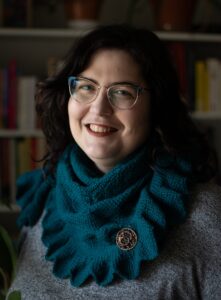
A little-known work, Flóvents saga claims to tell the story of the first Christian king of Frakkland. Translated from a now-lost chanson de geste, it survives today in 23 manuscripts with the oldest dating from the first quarter of the fourteenth century. Moreover, Flóvents saga has the (perhaps dubious) honor of being the oldest surviving relative of its particular branch of stories of Flóvent, the nephew of Constantine, connecting the narrative to epic cycles produced in Italian and German in the late medieval and early modern periods.
Despite the saga’s relative popularity in Iceland through the centuries, it was last edited in 1884, by Swedish philologist Gustaf Cederschiöld, who, as might be expected of nineteenth century philological practice, dismissed younger copies of the text, and was seemingly unaware of a major part of the saga’s transmission history.
This presentation will focus on the questions that underly a new critical edition of Flóvents saga, with particular attention paid to the balance between authenticity and accessibility, and the question of how best represent a text that holds a relatively unique place for both Old Norse and medieval European literature. It does so in light of the saga’s manuscript rich tradition which spanned almost to the twentieth century to illuminate the role of Flóvent both in Iceland and in Europe.
Holly McArthur is a 2024–2025 Leifur Eiríksson fellow and a Ph.D. Candidate in Scandinavian Philology at the University of Wisconsin–Madison. She holds an MA in Viking and Medieval Norse Studies from the University of Iceland (2019). Her work studies cultural transmission and literary translation between Old French and Old Norse-Icelandic.
—o—o—o—
Ivar Berg
Old Norse–Norwegian
Fimmtudaginn 27. mars 2025 kl. 16.30 / Thursday, March 27, 2025, at 16.30
Fyrirlestrasal Eddu (E-103) / Edda auditorium (E-103)
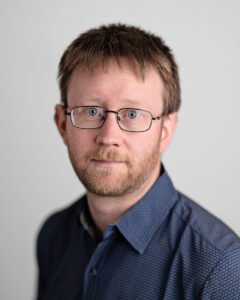
What’s in a name? The terminology used for the West Nordic medieval language varies between ‘(Old) Icelandic’, ‘Old Norwegian’, ‘Old Norse’, and the combination ‘Old Norse–Icelandic’. I will discuss some ideological implications of this terminology before moving on to linguistic form.
Although Norwegian and Icelandic must have been the same at the time of settlement, there are dialectal differences already in the oldest extant texts from the 12th century, making the two languages (and Faroese) an interesting example of linguistic divergence in documented history. I will show a few central points where the dialects seem to have been different and compare them with the “textbook norm” of the standard reference works.
Finally, I will show how the Menota corpus can be used in linguistic analysis, looking at the Norwegian texts with annotation published in the corpus. This makes it possible to quantify the relation between competing variants, and shows how an annotaded corpus makes the historical linguist’s life substantially easier. My point here is at least partly methodological, as this is work in progress, but I will show how this approach allows us to get a clearer understanding of some defining characteristics of Old Norwegian.
Ivar Berg is professor of Scandinavian linguistics at the University of Trondheim (NTNU). He works on the history of Norwegian (and related languages) from philological, grammatical, and sociolinguistic points of view.
Fyrirlesturinn verður haldinn á ensku og er öllum opinn. / The talk will be delivered in English and is open to all.
—o—o—o—
Tonicha Upham
“Very Unsatisfactory, Inaccurate, and Sometimes Entirely Fabulous”
Fact and Fiction in the Arabic Sources for the Viking World
Fimmtudaginn 13. mars 2025 kl. 16.30 / Thursday, March 13, 2025, at 16.30
Fyrirlestrasal Eddu (E-103) / Edda auditorium (E-103)
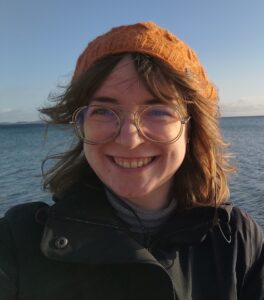
Medieval Arabic geographical sources have become a popular source for the study of the Viking world, especially where the Rūs are concerned, and many of the surviving sources are incredibly rich. Nonetheless, scholars of the Viking world often voice concerns – about how much geographers and observers really understood when hampered by linguistic and cultural barriers, about the sources of the information used by geographers, and about the overall trustworthiness of these sources, especially when geographers begin to tell tall stories about the north. This leaves us with a huge amount of material that is neglected by scholars, both because it is not easily accessible, and because it is not considered trustworthy.
This lecture reckons with the line between fact and fiction, and the overall problem of source reliability, by exploring what the Arabic sources on the Viking world say and setting this against what scholars want them to say. Looking back to the earliest uses of these sources by Viking historians and antiquarians, and tracing layers of geographical transmission through understudied Arabic sources, this lecture offers an assessment not only of how Viking Studies can use and approach the Arabic geographical material, but of what it means for a geographer to write accurately about the far north.
Tonicha Upham is a postdoctoral fellow at the Centre for the World in the Viking Age (WiVA), Uppsala University. She has a PhD in History from Aarhus University (2023), and an MA in Viking and Medieval Norse Studies from the University of Iceland (2019). Her work deals with the Islamicate sources for the Viking world, and during her current project she is concentrating on the Arabic sources for Scandinavia.
Fyrirlesturinn verður haldinn á ensku og er öllum opinn. / The talk will be delivered in English and is open to all.
—o—o—o—
Gunnar Harðarson
Fingraför spekinnar: Kaflar úr sögu íslenskrar heimspeki á miðöldum
Framsaga og umræður
Miðvikudaginn 11. desember 2024 kl. 16.30 / Wednesday, December 11, 2024, at 16.30
Fyrirlestrasal Eddu / Edda auditorium

Síðsumars kom út bókin Fingraför spekinnar: Kaflar úr sögu íslenskrar heimspeki á miðöldum þar sem rakin eru spor eftir heimspekilega hugsun í miðaldaritum Íslendinga. Rannsóknin leiðir í ljós hugmyndir um heimspeki, beitingu heimspekilegra hugtaka og rökfærslur af heimspekilegum toga. Meðal annars er gerð tilraun til að skilja og túlka þá mynd af heimspekinni sem sjá má teiknaða í handritinu GKS 1812 4to, en einnig er rýnt í heimspekileg og siðfræðileg hugtök í Hómilíubókinni og Hávamálum, sem reynast vera gerólík. Þá eru heimspekilegar rökfærslur í formála Snorra-Eddu brotnar til mergjar og fyrri sjónarmið endurskoðuð. Jafnframt er gerð grein fyrir því með hvaða hætti alfræðileg hugsun birtist í handritum á borð við Hauksbók, þrátt fyrir að ekki sé hægt að kalla slík handrit alfræðirit, og þau sett í samband við lögmannsstarfið. Í lok bókarinnar er síðan gefið yfirlit um rannsóknir á siðfræði Íslendingasagna.
Höfundur flytur framsögu um efni bókarinnar en síðan munu tveir viðmælendur, Salvör Nordal og Hjalti Snær Ægisson, bregðast við og eftir það verða almennar umræður.
Gunnar Harðarson er prófessor emeritus við Háskóla Íslands. Hann lauk á sínum tíma doktorsprófi í heimspekisögu frá Panthéon-Sorbonne háskólanum í París og hefur einkum kennt námskeið á sviði heimspekisögu og listheimspeki og jafnframt stundað rannsóknir á sögu heimspekinnar á Íslandi.
Fyrirlesturinn fer fram á íslensku og er öllum opinn. / The talk will be conducted in Icelandic and is open to all.
Fyrirlesturinn er haldinn í samstarfi við Heimspekistofnun Háskóla Íslands
—o—o—o—
Ela Sefcikova
Medieval Texts, Modern Approaches
A Queer Reading of Loki in Old Norse Literature
Fimmtudaginn 7. nóvember 2024 kl. 16.30 / Thursday, November 7, 2024, at 16.30
Edda 218
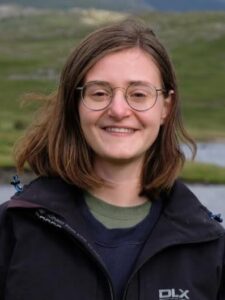
Loki plays a central role in disrupting the social order of the æsir in medieval texts like the Prose and Poetic Edda. His transgressions of social norms include gender fluidity, sexual misconduct, cowardice and the breaking of oaths. Even his identity is unstable as it shifts between texts and he takes on multiple names, such as Loptr, Lóðurr and Þǫkk, and shapes, such as salmon, horse and flea. This lecture will explore the ways in which queer theory (especially the works of Judith Butler and Eve Kosofsky Sedgwick) can provide new perspectives on Loki’s role in the surviving medieval narratives, focusing on the rifts that Loki creates among the characters around him, as well as the inconsistencies and incoherence within Loki himself. Previous scholarly literature has largely focused on making sense of Loki, or ‘solving’ the problem of Loki. Queer theory, on the other hand, provides a framework for centring the discontinuities and ruptures that can be found on the margins of dominant social structures, which makes it a useful tool in analysing Loki’s character in the surviving medieval texts. Loki’s transgressions play an important role in the texts he inhabits, but his actions also help the æsir and reinforce their dominance over other social groups within the cosmology of the eddas, making him a complex figure that cannot easily fit into any one category or function.
Ela Sefcikova is a Ph.D. candidate in Scandinavian Studies at the Nordeuropa-Institut, Humboldt-Universität zu Berlin. She holds a BA and M.Phil. in Anglo-Saxon, Norse and Celtic from the University of Cambridge. Her research interests include gender and queer studies, new philology and medieval Icelandic literature.
Fyrirlesturinn verður haldinn á ensku og er öllum opinn. / The talk will be delivered in English and is open to all.
—o—o—o—
Helgi Þorláksson
Gissur meðal Gaddgeðla
Um ætlaða Suðureyjaferð Gissurar Þorvaldssonar
Fimmtudaginn 31. október 2024 kl. 16.30 / Thursday, October 31, 2024, at 16.30
Fyrirlestrasal Eddu / Edda auditorium

Aðra aðalgerð Sturlungu má skilja þannig að Gissur Þorvaldsson hafi ferðast frá Noregi og dvalist á Suðureyjum fyrir vestan Skotland veturinn 1257-8, síðan farið aftur til Noregs sumarið 1258, hlotið jarlstign og haldið að svo búnu til Íslands. Hin ætlaða Suðureyjaferð er sjaldan rædd í skrifum íslenskra fræðimanna. Hér verður grafist fyrir um hvaðan vitneskjan muni komin um förina og hvort hún sé trúverðug. Fyrirlesari færir rök fyrir því að Gissur hafi verið á Suðureyjum og farið þangað á vegum Noregskonungs. Í fyrirlestrinum verður leitast við að setja förina í samband við ákafa viðleitni Hákonar gamla Noregskonungs til að mynda stórveldi í Norður-Atlantshafi. En hvert var mikilvægi ferðarinnar fyrir Gissur og hvaða áhrif hafði hún á verkefnið sem honum var falið, að koma Íslandi undir konung? Algengt var að telja, og er kannski enn, að Gissur hafi leikið tveimur skjöldum gagnvart konungi og jafnframt dulið eftir mætti fyrir löndum sínum að hann lofaði konungi að fá þá til að samþykkja skattgreiðslur. Er þetta líklegt fyrst hann naut svo mikils trausts konungs eins og Suðureyjaferðin bendir til? Leitast verður við að varpa ljósi á hverja Gissur fann helst að máli í Suðureyjum og gerð grein fyrir áleitni Skotakonungs við suðureyska höfðingja og mikilvægi norskra tengsla fyrir ráðamenn á eyjunum. Spurt er hvort saga norskrar áleitni í Suðureyjum geti ekki varpað nokkru ljósi á sambærilega áleitni á Íslandi.
Helgi Þorláksson er prófessor emeritus í sagnfræði við Háskóla Íslands. Hann fékkst í kennslu og rannsóknum einkum við Íslands- og Norðurlandasögu frá um 900 til um 1800, svið pólitískrar sögu, félagssögu og hagsögu. Doktorsritgerð hans fjallar um hagsögu Íslands á 13. og 14. öld og náin tengsl við Noreg. Fyrirlesari hefur tvisvar ferðast um Suðureyjar, í seinna skiptið í júní sl.
Fyrirlesturinn verður haldinn á íslensku og er öllum opinn. / The talk will be delivered in Icelandic and is open to all.
—o—o—o—
Rosemary Power
‘The great Book of Columcille, the chief relic of the western world’
The Book of Kells, an illuminated manuscript of the late eighth century
Fimmtudaginn 19. september 2024 kl. 16.30 / Thursday, September 19, 2024, at 16.30
Edda 218

The Book of Kells was apparently conceived in the late eighth century in honour of the bi-centenary of the death of Iona’s founding saint, Columcille, latinised Columba. It is a Gospel book with preliminary material and numerous illuminations consisting of ‘portraits’, full-page text images and minor passage-markers. They use an extensive palette, and refer to both the text and to each other through intricate yet visibly delightful concepts. The paper considers briefly the life of Columcille as known through an early Vita and other writings; his journey from Ireland to the Hebridean island of Iona, now part of Scotland; the influences that persisted in the monastic community he founded there and on its daughter-houses throughout the Gaelic-speaking world and beyond; and the reasons the book was taken to Kells in Ireland and later to Dublin. Battered and incomplete, it remains a remarkable work with evidence of widespread influences, both geographical and intellectual, which scholars have only recently began to interpret again.
The talk will focus on a small number of the images, demonstrating the multiple uses of colour; interpreting the intentions in terms of the very positive theology found in this Gospel book and in relation to some of the interpretations of the time; and the visual links between images.
Rosemary Power gained her doctorate on the Fornaldarsögur Norðurlanda and their Irish material. She has published academically on Norse-Gaelic literary links, Hebridean history in the Norse period, and folk tradition. She has also published some ten books for the general reader, including Image and vision: reflecting with the Book of Kells (Veritas, Dublin, 2022). Now retired, she works on the medieval pilgrimage routes between Donegal in Ireland and Iona; and is completing academic articles and a book on Vatnsdalur in the 1970s, a time when she lived there. She is an Associate Researcher of the University of Galway, Ireland.
Fyrirlesturinn verður haldinn á ensku og er öllum opinn. / The talk will be delivered in English and is open to all.
—o—o—o—
